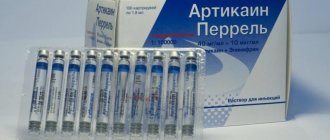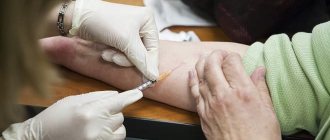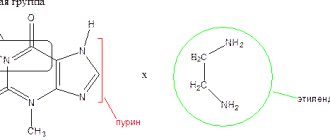Peculiarities
- Actovegin ointment belongs to a group of drugs that accelerate tissue regeneration processes. It is a white substance with a uniform consistency. The product is supplied in aluminum tubes of various sizes.
- The active component in Actovegin ointment is a deproteinized hemoderivative. This is a natural component that is obtained from the blood of calves during dialysis and ultrafiltration. The natural substance contains more than two hundred biologically active substances. In this regard, it is impossible to accurately describe the mechanism of action of the drug. The main substances in the composition of the hemoderivat:
- Amino acids important for the body.
- Compounds of peptides and carbohydrates.
- Nucleotides.
- Cholesterol.
- All of these components are natural to the human body, so the drug is well tolerated.
- Actovegin ointment has a pronounced antihypoxic effect. That is, when using the ointment, it is possible to compensate for the lack of oxygen in tissue cells, and, therefore, accelerate the regeneration processes. In addition, the use of the product increases the concentration of amino acids, improves blood circulation and normalizes metabolism at the cellular level.
Actovegin® (Actovegin®)
Actovegin® is an antihypoxic agent that has three types of effects: metabolic, neuroprotective and microcirculatory. Actovegin® increases the absorption and utilization of oxygen; phospho-oligosaccharides included in the drug inositol
have a positive effect on the transport and utilization of glucose, which leads to an improvement in the energy metabolism of cells and a decrease in the formation of lactate under ischemic conditions.
Several ways to implement the neuroprotective mechanism of action of the drug are being considered.
Actovegin® prevents the development of apoptosis induced by amyloid beta peptide (AP25-35).
Actovegin® modulates the activity of nuclear factor kappa B (NF-kB), which plays an important role in the regulation of apoptosis and inflammation in the central and peripheral nervous system.
Another mechanism of action is associated with the nuclear enzyme poly(ADP-ribose) polymerase (PARP). PARP plays an important role in the detection and repair of single-stranded DNA damage, but excessive activation of the enzyme can trigger cell death in conditions such as cerebrovascular disease and diabetic polyneuropathy. Actovegin® inhibits PARP activity, which leads to functional and morphological improvement in the central and peripheral nervous system.
The positive effects of the drug Actovegin®, affecting microcirculation processes and the endothelium, are an increase in the speed of capillary blood flow, a decrease in the pericapillary zone, a decrease in the myogenic tone of precapillary arterioles and capillary sphincters, a decrease in the degree of arteriovenular shunt blood flow with preferential blood circulation in the capillary bed and stimulation of the function of endothelial synthase nitric oxide, which affects the microvasculature. In the course of various studies, it was found that the effect of the drug Actovegin® occurs no later than 30 minutes after taking it. The maximum effect is observed 3 hours after parenteral and 2-6 hours after oral administration.
As shown by the
ARTEMIDA ( NCT 0 1582854), the purpose of which was to study the therapeutic effect of the drug Actovegin® in relation to cognitive impairment in 503 patients with ischemic stroke, the therapeutic effect of the use of the drug persists for at least another 6 months. after stopping the use of the drug. As shown by the APOLLO ( NCT 03469349), the purpose of which was to study the therapeutic
effect of the drug Actovegin® in relation to pain-free walking distance in 366 patients with chronic occlusive diseases of the arteries of the lower extremities of the PV stage according to the Fontaine classification, the therapeutic effect of the use of the drug persists for at least another 3 months . after stopping the use of the drug.
Indications
Actovegin ointment, the price of which is affordable, is prescribed in the presence of damage to the skin in order to speed up healing. The product is indicated for the treatment of any wounds. These can be cuts, scratches, etc. It is used to treat inflammatory processes, radiation injuries on the skin and mucous membranes
Indications for use of the product are:
- Trophic ulcers that occur with varicose veins or diabetic angipatia.
- Bedsores caused by prolonged immobility of seriously ill patients.
- Burns that can occur as a result of thermal or chemical exposure, or during prolonged exposure to the sun.
Dosages in the instructions and methods of use of Actovegin
The injection solution is used for intravenous and intramuscular administration:
- Depending on the complexity of the pathological process, Actovegin is used in dosages from 10 to 20 ml IV, then the volume changes to 5 ml. The drug is prescribed daily or several times a week.
- For metabolic and blood circulation disorders in the GM - two weeks, 10 ml every day, the next month - from 5 to 10 ml several times a week.
- Ischemic stroke, arterial angiopathy - from 20 to 50 ml mixed with infusion solution (300 ml). Therapy is carried out for 2-3 weeks.
- Trophic ulcers, burns - 5 ml IM or 10 ml IV. This dosage is prescribed 1-2 times a day, with additional local therapy with another form of Actovegin.
Prevention and treatment of skin pathologies requires daily administration of 5 ml of the product intravenously, in between radiation exposures.
The solution for infusion is prescribed according to a different scheme:
- the medicine is injected into the veins or arteries, the final doses depend on the condition of the body;
- the daily norm is 250 ml, later it is increased to 500 ml;
- The therapeutic course includes 10-20 manipulations.
The dropper speed should not exceed 2 ml per minute. The solution should not penetrate into tissues adjacent to blood vessels.
The instructions for the tablets indicate that they should not be chewed, but should be taken before meals and washed down with a small amount of liquid. From 1 to 2 pieces are prescribed three times a day, the duration of treatment is 1-1.5 months.
For diabetic polyneuropathy, the medication is administered intravenously, 2 g per day (3 weeks), then switched to tablets - up to 3 pieces per day, for 4 months.
Contraindications and negative reactions of the body
The main contraindication for the use of Actovegin ointment, the instructions for use warn about this, is hypersensitivity to the components of the drug. Due to individual intolerance to the drug, local allergic reactions may occur. To check the body's reactions, before using the ointment, apply a small amount to the inside of the wrist. If after a couple of hours there is no redness of the skin or discomfort, Actovegin ointment can be used.
Due to the natural composition of the product, there is no categorical ban on its use during pregnancy and lactation. But at the same time, you should use the ointment only if there are indications and recommendations from a doctor.
In practice, Actovegin ointment was well tolerated. Only with hypersensitivity are local allergic reactions possible. In this case, the use of ointment should be abandoned. To eliminate side effects, it is recommended to take antihistamines.
Actovegin solution for injection 40 mg/1 ml in 2 ml ampoules No. 5x5
Name
Actovegin solution.
Release forms
Injection.
FTG
Tissue regeneration stimulator.
Compound
1 ampoule (2 ml) contains Actovegin concentrate as an active substance (in terms of dry deproteinized calf blood derivative) - 80 mg, containing sodium chloride - 53.6 mg; excipient: water for injection – up to 2 ml. 1 ampoule (5 ml) contains Actovegin concentrate as an active substance (in terms of dry deproteinized calf blood derivative) - 200 mg, containing sodium chloride - 134.0 mg; excipient: water for injection – up to 5 ml. 1 ampoule (10 ml) contains actovegin concentrate as an active substance (in terms of dry deproteinized calf blood derivative) - 400 mg, containing sodium chloride - 268.0 mg; excipient: water for injection – up to 10 ml.
Description
A clear, yellowish solution, practically free of particles.
Pharmacotherapeutic group
Other hematological agents. ATX code: В06АВ.
Pharmacological properties
Pharmacodynamics
Deproteinized hemoderivative in the blood of calves causes an increase in the energy metabolism of cells, which is not organ-specific. This activity is confirmed by measurements of increased accumulation and increased utilization of glucose and oxygen. The total effect of these processes leads to an increase in ATP metabolism and, accordingly, to an increase in the energy supply of the cell. In deficient conditions with disruption of the normal functioning of energy metabolism (hypoxia, substrate deficiency) and in conditions with increased energy needs (repair, regeneration), Actovegin® activates energy-dependent processes of functional metabolism and conservation metabolism. As a secondary effect, an increase in blood supply is observed.
Pharmacokinetics
Using chemical analytical methods, it is impossible to study the pharmacokinetic parameters of the drug Actovegin®, such as absorption, distribution and excretion, since its active ingredients are physiological components that are normally present in the body. The study of various parameters in animal experiments and in clinical studies showed that the effect of the drug Actovegin® begins to appear no later than 30 minutes after use. The maximum effect after parenteral administration or oral administration is achieved after 3 hours (2–6 hours).
Indications for use
- metabolic and vascular disorders of the brain (including dementia); - peripheral (arterial and venous) vascular disorders and their consequences (arterial angiopathy, venous ulcers of the lower extremities), including diabetic polyneuropathy.
Directions for use and dosage
General dosing instructions Ampoules with a breaking point (TP) Instructions for using ampoules TR: Take the ampoule with the colored dot pointing up! Allow the solution to drain from the top of the ampoule by lightly tapping the ampoule and shaking it. Take the ampoule with the colored dot pointing upward! Break off the top of the ampoule as shown in the picture. The solution for injection has a slightly yellowish color. The color intensity of the drug from different batches may vary due to the raw materials used. Color does not affect the effectiveness and tolerability of the drug. Actovegin® solution for injection can be administered intravenously (IV), intramuscularly (IM) or intra-arterially (IA), and it can also be added to solutions for infusion. When administered as an infusion, 10-50 ml of the drug is added to 200-300 ml of the main solution (isotonic sodium chloride solution or 5% glucose solution). Infusion rate: approximately 2 ml/min. When prescribing by infusion, general contraindications to infusion therapy should be taken into account, such as decompensated heart failure, pulmonary edema, oliguria, anuria, overhydration. Dosage depending on specific indications Metabolic and vascular disorders of the brain: from 5 to 25 ml (200-1000 mg per day) intravenously daily for two weeks, followed by switching to tablet form. Metabolic and vascular disorders of the brain, such as ischemic stroke: 20-50 ml (800-2000 mg) in 200-300 ml of 0.9% sodium chloride solution or 5% dextrose solution, intravenously drip daily for 1 week, then 10-20 ml (400-800 mg) intravenously - 2 weeks, followed by switching to tablet form. Peripheral (arterial and venous) vascular disorders and their consequences: 20-30 ml (800-1000 mg) of the drug in 200 ml of 0.9% sodium chloride solution or 5% dextrose solution, intra-arterial or intravenous daily; Duration of treatment is 4 weeks. Venous ulcers of the lower extremities: 10 ml (400 mg) intravenously or 5 ml intramuscularly daily or 3-4 times a week depending on the healing process. Diabetic polyneuropathy: 50 ml (2000 mg) per day intravenously for 3 weeks, followed by switching to tablet form - 2-3 tablets 3 times a day for at least 4-5 months. The duration of treatment is determined individually according to the symptoms and severity of the disease.
Contraindications
Allergy to Actovegin® or similar drugs or excipients.
Precautionary measures
When administering Actovegin® parenterally, it is necessary to maintain sterility during manipulations. Actovegin® is intended for single use, since it does not contain preservative additives. Opened ampoules and the prepared solution should be used immediately. Unused drug and used consumables must be disposed of in accordance with local legislation. When mixing the contents of Actovegin® ampoules with other solutions for injection or infusion, physicochemical incompatibility, as well as interaction between active substances, cannot be ruled out, even if the solution remains clear. As a result, it is unacceptable to mix Actovegin® with other drugs, except for those mentioned in the “General dosing instructions” section. When using Actovegin® intramuscularly, no more than 5 ml should be administered slowly, since the solution is hypertonic. Parenteral administration of Actovegin® should be carried out under medical supervision if appropriate means are available for the treatment of allergic reactions. Due to the possibility of anaphylactic reactions, it is recommended that a test infusion/injection (hypersensitivity test) be performed before starting therapy. Do not use a solution that is cloudy or has visible solids. It is a source of sodium, which should be taken into account when prescribing to patients on a controlled sodium diet. If electrolyte disturbances (such as hyperchloremia and hypernatremia) are present, they should be adequately corrected.
Interaction with other drugs
Not known.
Use during pregnancy and breastfeeding
Use during pregnancy During pregnancy, Actovegin® should be used only if the therapeutic benefit outweighs the potential risk to the fetus. Use during breastfeeding During breastfeeding, Actovegin® should be used only if the therapeutic benefit outweighs the potential risk to the child.
Side effect
In the information below, adverse effects are rated according to the following frequency classification: Very common ≥ 1/10 Frequent ≥ 1/100 to
Overdose
There is no information regarding an overdose of Actovegin®. Based on available pharmacological data, no additional undesirable effects are expected.
Impact on the ability to drive vehicles and machinery
There is little or no impact.
Release form
Solution for injection 40 mg/ml. 2, 5 or 10 ml of the drug in colorless glass ampoules (type I, Eur. Pharm.) with a breaking point. 5 ampoules in a plastic blister pack. 1 (for 5 ml and 10 ml) or 5 (for 2 ml) blister packs with instructions for use are placed in a cardboard box. Transparent round protective stickers with holographic inscriptions and first-opening control are glued to the pack.
Storage conditions
Store in a place protected from light at a temperature not exceeding 25 °C. Keep out of the reach of children!
Shelf life
3 years. Do not use the drug after the expiration date.
Vacation conditions
By doctor's prescription.
Buy Actovegin injection solution 40mg/1ml in 2ml ampoules No. 5x5 in the pharmacy
Price for Actovegin solution for injection 40 mg/1 ml in 2 ml ampoules No. 5x5
Instructions for use for Actovegin injection solution 40 mg/1 ml in 2 ml ampoules No. 5x5





